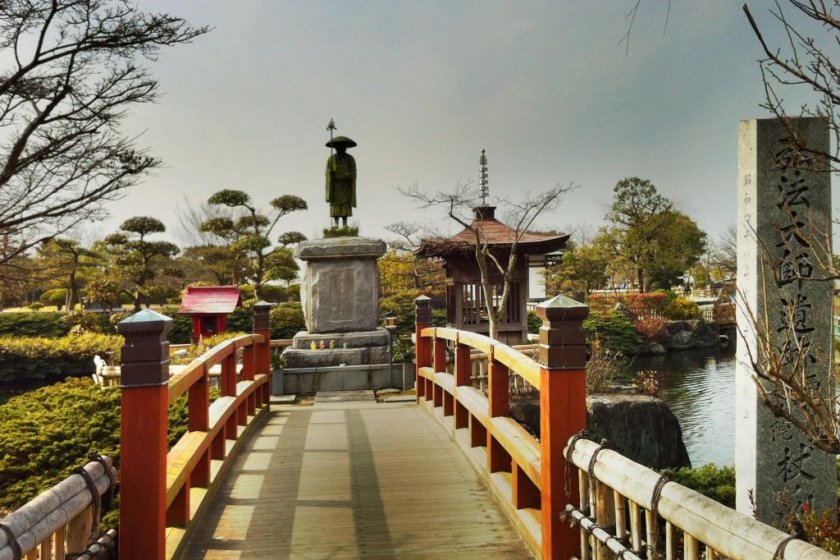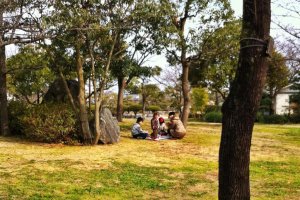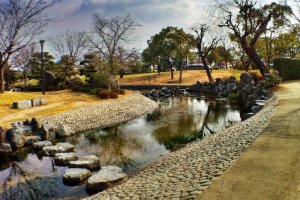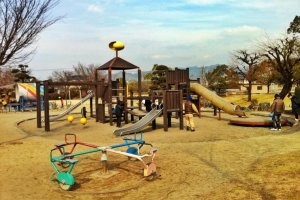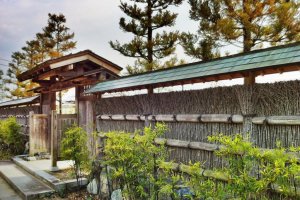Close to Sairin-ji Temple on the 88 temple pilgrimage route is a rather lovely park in an otherwise unremarkable urban setting. It has an imposing entrance marked by pines, a large stone inscribed with the words Jonofuchi Koen, and a gateway with fancy tile-work.
The Matsuyama Board of Education posts educational signs at all of the major temples in the city, and the one for Sairin-ji has this to say:
“Sairin-ji Temple is the 48th of the 88 sacred temples of Shikoku. It is said that the temple buildings were moved here by Kobo-Daishi (Great Teacher) at the beginning of the 9th century. In a document detailing the 88 temples along the sacred pilgrimage route of Shikoku, there is a legend concerning the pond west of this temple, which is known as ‘Jo-no-fuchi’. It states that long ago, when people were suffering due to an extended drought, Kobo-Daishi prayed at sunrise, and thrusting his staff into the ground, caused water to gush into the air. The beautiful deep blue water that resulted was of an amount beyond measure. Jo-no-fuchi Park is found to the west of the temple. It is said that the spring there flows constantly. It has been designated one of Japan’s 100 famous bodies of water.”
Famous or not, the water is very pleasant in any season. It’s home to a large number of colorful koi carp, a very sociable type of fish that is quite used to humans. There are also ducks who are quite tame. And rabbits. I’d never associated rabbits with water before, but there are some living in cages above the channel of Kobo Daishi’s water that runs outside the park. Local people come with plastic bottles to gather the spring water which gushes from bamboo spigots dotted around the park.
This is a wonderful place for children. Food for the fish and ducks can be bought from several stalls in the park, and it’s fascinating to see them vying for this randomly flung nutrition from above and below the water. The park also has some good funnables such as climbing frames and slides. In summer, children are free to play in the shallow river that forms a loop near the play area. Their parents can watch them from the shaded bank which is a popular spot for picnics.
The park is also attractive for those with an interest in Japanese gardens. Something of a devotee of bamboo fencing myself, I’m excited to see the various styles on display here with their intricate, hand-tied rope fixtures.
In one corner is the Teireigi Chaya, a tea-house that serves an excellent lunch as well as tea, coffee, and delicious cold things in summer.
If you’re doing the pilgrimage temples in this area, don’t miss this Kobo Daishi power spot.
